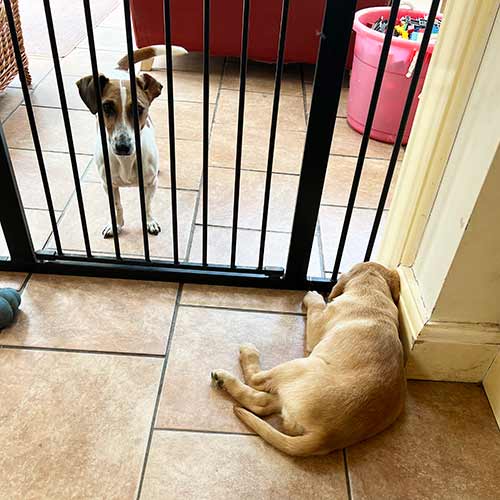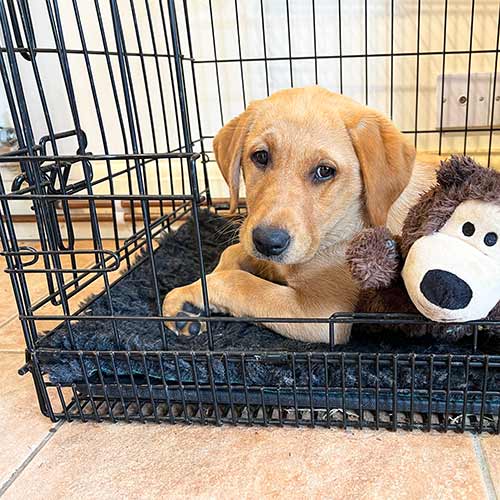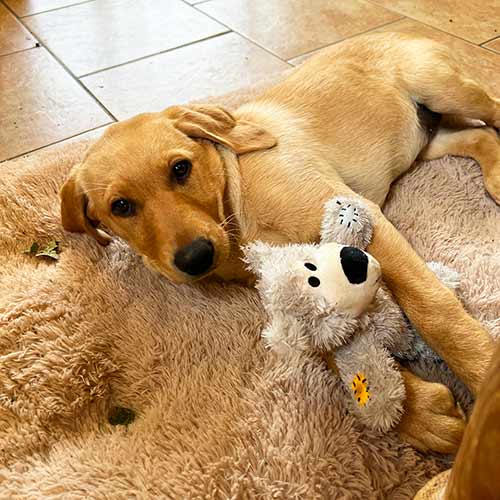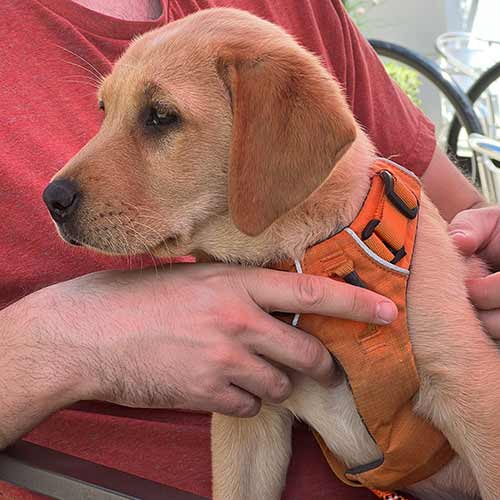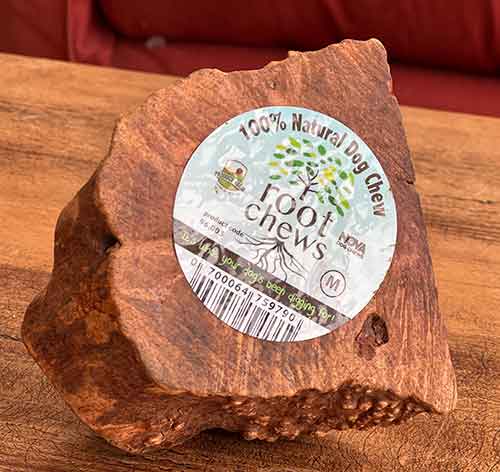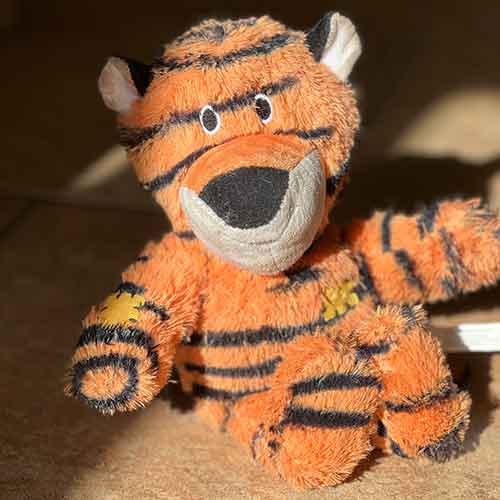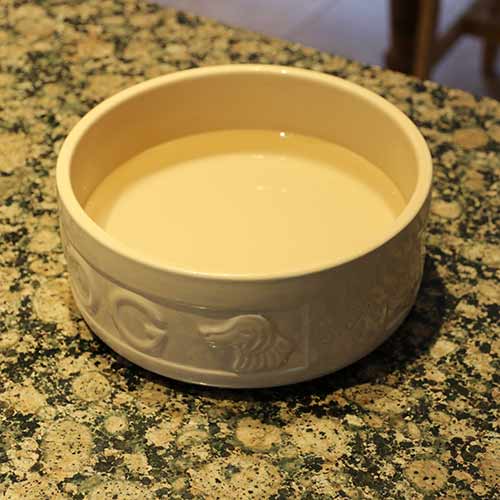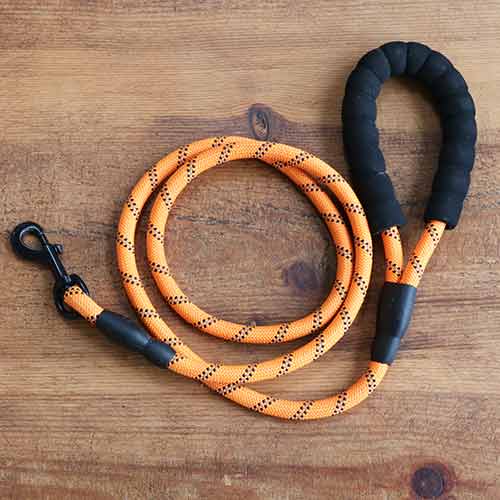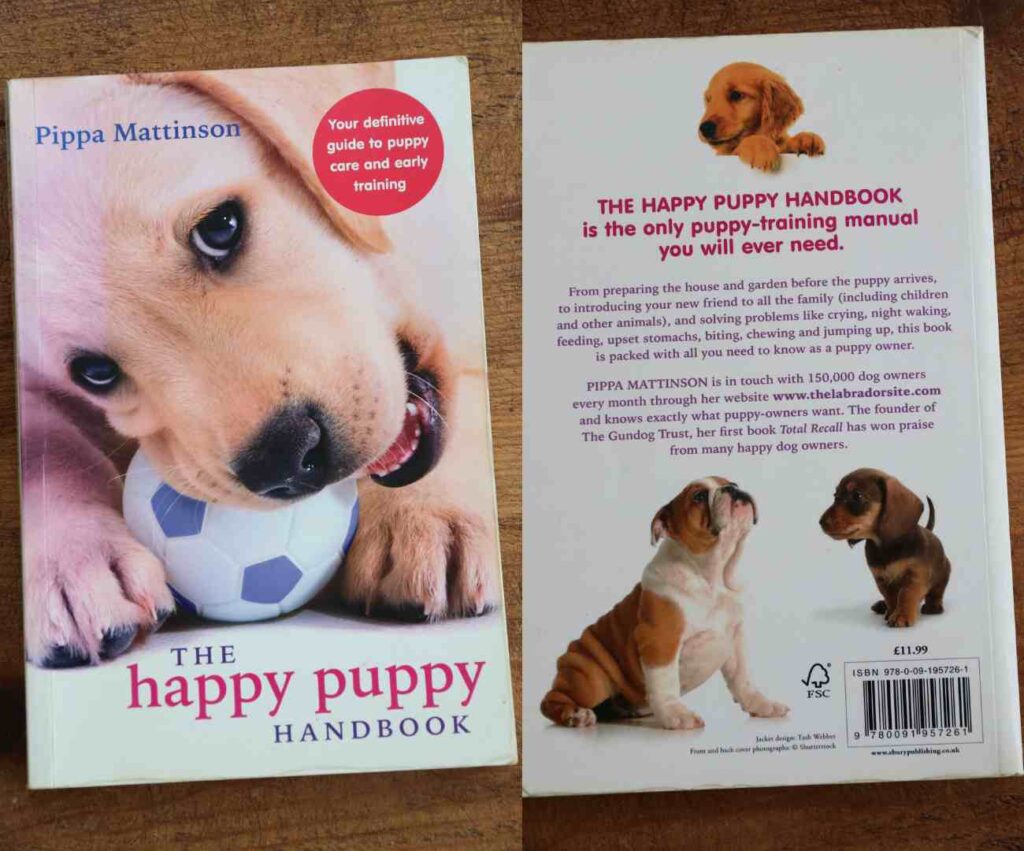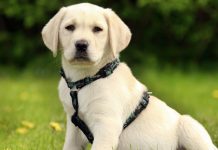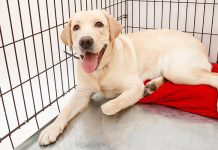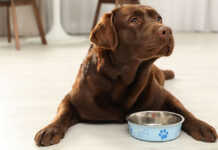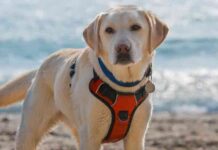It is a lot of fun shopping for your new Labrador puppy, but puppy gear can be expensive! I’ve made a quick checklist of the supplies you really do need. These are all items I make sure I have in my home for every puppy I raise.
Please note that the Labrador Site is an Amazon affiliate which means that if you make a purchase through one of those links we are paid a small fee that does not affect the price you pay. I only recommend products I like and have tested!
1: Baby gate – helps you build a safe puppy zone
Baby gates are used to keep small puppies out of certain parts of your home. A baby gate can restrict your puppy to rooms with washable floors. And prevent your puppy falling on the stairs or playing unsupervised on your carpets.
My black gate is an extra wide one by Baby Dan and is really good quality. It gives my other dogs a break from the puppy. And let’s my grandchildren play with their toys in peace. The Cumbor Extra Wide gate(paid link) from Amazon is very similar.
2: Puppy crate – your puppy’s den
A puppy crate is used to create a safe den for your puppy. It prevents your puppy getting into mischief when you cannot watch them (whilst you are sleeping for example) and helps you to potty train your pup.
Bonnie’s den is the Amazon Basic’s double door crate(paid link). The bedding is VetBed(paid link) which can be machine washed to 95 degrees and comes in a range of different colors. And Teddy is from the Kong Knots(paid link) range.
You need a small crate, or a big crate with a divider inside. It needs to be small, both to make the puppy feel safe, and to ensure he does not camp at one end, and use the other as a toilet. You’ll find lots of ideas and suggestions here Puppy Crates
If you are not sure whether or not you actually need a crate, or how to use one, check out this article: The benefits of a dog crate.
3: Soft Puppy Bedding
I use vetbed(paid link) in my crates, but I also like to give puppies a choice of soft places to lie when they are not in their crate.
Bonnie’s favorite is this mattress by JoeJoy(paid link). This type of bed is often marketed as ‘calming’ and puppies do seem to like the loose, soft, shaggy surface. It’s also cheap enough that it isn’t the end of the world if the puppy chews it. I recommend you do not spend a small mortgage on fancy bedding until your puppy is past the chewing stage!
4: Puppy Harness
I only buy and use Ruffwear Front Range harnesses(paid link). They are not cheap, but they are strong, washable and pretty. Most importantly they have front and back attachments and do not interfere with the puppy’s forward leg action the way that some harnesses do.
Some of mine have been through more than four generations of puppies and I’ve never worn one out. They come in a variety of colors, Bonnie is wearing ‘Campfire Orange’
5: Clicker
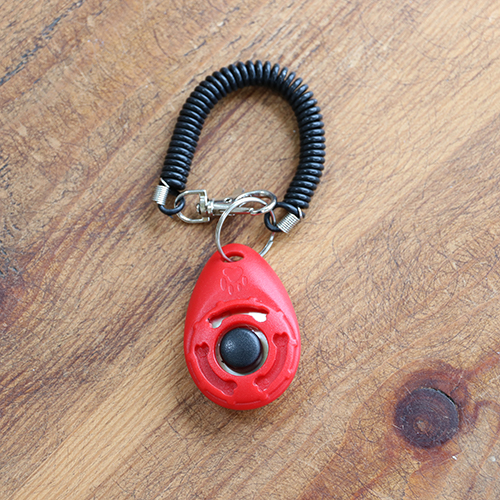
A clicker is an ‘event marker’. It tells the puppy “Hey, I liked it when you did that” in a much more precise way than the human voice can.
Your clicker will help you teach your puppy to focus on you, listen to you and bond with you. Its an invaluable training aid and will give you endless opportunities to play games with your puppy and get you off to a great start with obedience training.
I find the ones with a wristband(paid link) useful, and I have several of these as I am inclined to lose them!
6: Hard Chew Toy
Puppies need to chew. And they need to chew a variety of different surfaces. Tree root chews(paid link) are designed to satisfy your puppy’s need to chew on something hard, and help to reduce chewing on chair legs and baseboards.
Made from roots that don’t splinter, root chews are quite expensive but they last a long time
7: Soft Toy
All small puppies like to cuddle up to a soft toy. Puppies will chew their soft toys, but some are tough enough to last quite a while.
There is a lot more information about choosing toys that stand the test of time in my big guide to puppy toys.
For durability, you won’t go far with the Kong range(paid link), but don’t expect your puppy’s soft toys to last forever.
8: Water Bowl
Puppies like to play in water. Plastic and metal bowls tend to tip over too easily so I use heavy ceramic bowls.
Mine are by Mason Cash(paid link), one with a blue interior and one plain like this one, which is at least ten years old.
For food bowls, I use the plain stainless steel ones(paid link). They are easy to clean and they stack inside each other which saves on cupboard space.
9: Leash
The Ruffwear leash that goes with my Ruffwear Harness is rather expensive. So I use the Taglory 6 foot leash in orange(paid link), which is a sturdy leash and pretty good match to the harness color.
You could also use this for a puppy if you don’t want to pay for two. But I do also have a 4 foot one(paid link) which is lighter and thinner which I use for the first couple of months.
10: Information – The Happy Puppy Handbook
Last but not least, if this is your first puppy, you’ll need some guidance.
The Happy Puppy Handbook(paid link) is my guide to the first few months with a new puppy and will answer your puppy questions and get you off to a great start.
You can also check out my bookshelf for more reading ideas.
What’s next?
Obviously, this is just the beginning! You’ll need to add more supplies as your puppy grows and develops. I recommend you get a decent dog whistle(paid link) pretty soon, and a copy of Total Recall(paid link) so that you can get your puppy racing back towards you when they are off leash. As your puppy grows out of small crates and portable puppy carriers you might want to invest in a crate designed to fit your vehicle, or a dog guard. And once chewing is over, you’ll be able to pick out some lovely dog beds to match your home decor.
If you need some support with raising your new puppy, head over to my Dogsnet support group on Facebook. You’ll also find a range of online training courses on my Dogsnet website. And good luck with your new puppy!
The Labrador Site Founder
Pippa Mattinson is the best selling author of The Happy Puppy Handbook, the Labrador Handbook, Choosing The Perfect Puppy, and Total Recall.
She is also the founder of the Gundog Trust and the Dogsnet Online Training Program
Pippa's online training courses were launched in 2019 and you can find the latest course dates on the Dogsnet website

